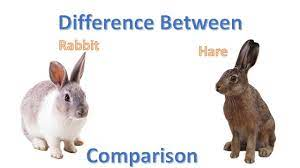ALL TYPES JOKES ,HAIR RELATED CONTENTS,GENERAL KNOWLEDGE, GENERAL KNOWLEDGE QUESTION AND ANSWER,MOTIVATIONAL SHORT STORY, SHORT STORY, POEM,KNOW THE FACTS .
Friday, February 3, 2023
What’s the Difference Between Rabbits and Hares?
Why Are There Only 28 Days in February?
Why Are There Only 28 Days in February?
Each month in the modern Gregorian calendar consists of at least 28 days. That number would be a nicely rounded 30 were it not for February. While every month besides the second in the calendar contains at least 30 days, February falls short with 28 (and 29 on a leap year). So why is the most widely used calendar in the world so inconsistent in the lengths of its months? And why is February stuck with the fewest number of days? Blame it on Roman superstition.
The Gregorian calendar’s oldest ancestor, the first Roman calendar, had a glaring difference in structure from its later variants: it consisted of 10 months rather than 12. In order to fully sync the calendar with the lunar year, the Roman king Numa Pompilius added January and February to the original 10 months. The previous calendar had had 6 months of 30 days and 4 months of 31, for a total of 304 days. However, Numa wanted to avoid having even numbers in his calendar, as Roman superstition at the time held that even numbers were unlucky. He subtracted a day from each of the 30-day months to make them 29. The lunar year consists of 355 days (354.367 to be exact, but calling it 354 would have made the whole year unlucky!), which meant that he now had 56 days left to work with. In the end, at least 1 month out of the 12 needed to contain an even number of days. This is because of simple mathematical fact: the sum of any even amount (12 months) of odd numbers will always equal an even number—and he wanted the total to be odd. So Numa chose February, a month that would be host to Roman rituals honoring the dead, as the unlucky month to consist of 28 days.
Despite changes in the calendar as it was altered after Numa’s additions—alterations that include the shortening of February at certain intervals, the addition of a leap month, and eventually the modern leap day—February’s 28-day length has stuck.
Why is fish eaten for Chinese New Year?
Why is fish eaten for Chinese New Year?
In China, fish is traditionally served for Lunar New Year because the Chinese word for fish means 'being abundant', so it symbolises wellbeing and prosperity. "In northern China, carp is the most popular fish for the new year dinner., thus symbolizing wealth.
Thursday, February 2, 2023
What Does “SPF” Mean?
What Does “SPF” Mean?
The SPF on sunscreen stands for sun protection factor, a relative measurement for the amount of time the sunscreen will protect you from ultraviolet (UV) rays. UVB rays primarily affect the outer layer of the skin, the epidermis. They are responsible for sunburns and some surface-level skin cancers. The sun also emits UVA rays, which can penetrate into the lower level of the skin, called the dermis. UVA rays are typically associated with “tanning.” However, the darker color of the skin is a sign of damage to cells in the dermis. SPF numbers typically refer only to UVB rays, but some sunscreens can protect against UVA as well.
How does the SPF tell you how long you’re protected for? Well, let’s say you typically burn after being outside for 30 minutes and have an SPF 15 sunscreen you plan to use. You’d multiply 30 by the SPF, in this case 15. That means that you’re technically protected for 450 minutes, or 7.5 hours—do note that this is technically speaking. Most sunscreens will wear off long before then from exposure to the elements as well as improper application. It is recommended that you reapply every two hours. The number of UVB rays you’re protected from also increases with SPF, though marginally. SPF 15 blocks 93% of UVB rays, SPF 30 blocks 97%, and SPF 100 blocks 99%.
BEST ONE PLUS 5G MOBILES IN INDIA
1. OnePlus 10R 5G (Sierra Black, 8GB RAM, 128GB Storage, 80W SuperVOOC) RATING -- 4.3 ACTUAL PRICE -38999/- AMAZON PRICE 10% OFF - ...

-
March 31, 1901: Wuppertal Monorail Opens 1901 : A suspended monorail opens in Germany, whisking passengers on an ...
-
Add caption 6 Morning Habits That Can Help You Lose Weight If you’re aiming to lose some weight, then just taking up a diet or exercise reg...


